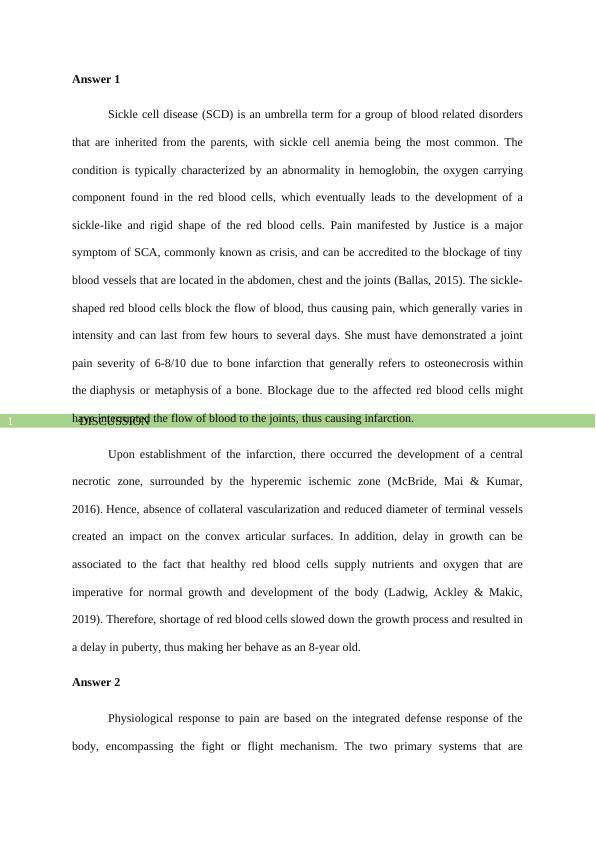Physiological Response to Pain and Sickle Cell Disease
Added on 2022-11-13
4 Pages846 Words230 Views
End of preview
Want to access all the pages? Upload your documents or become a member.
Introduction - Evidence Based Medicine
|15
|3028
|149
Analysis of a case study on sickle cell anaemia: Risk factors, pathophysiology, physical and psychological challenges, and nursing care plan
|18
|5528
|302
Indication of Plaque Accumulation Report
|8
|941
|14
Investigating the Impact of HbS Binding to GP1bα on Patients with Sickle Cell Disease
|16
|3847
|222
NRSG258 Acute Care Nursing : Assignment
|10
|2874
|30
Case Study on BMI and Coronary Artery Disease
|4
|792
|113


